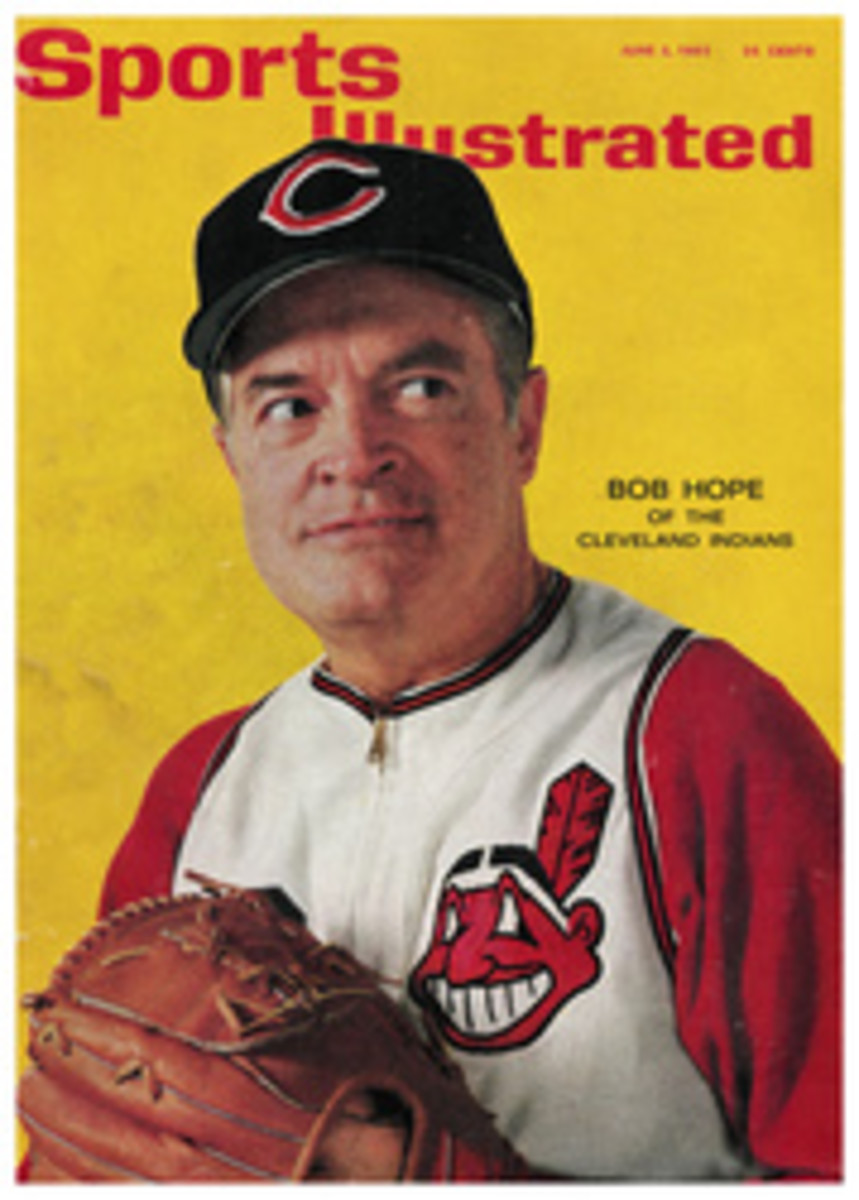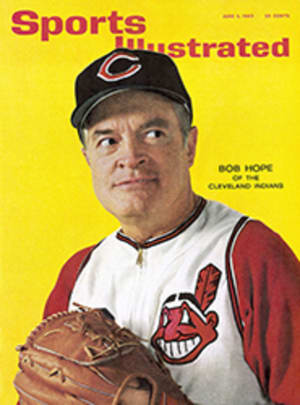
HOW A MAN OF SPIRIT WRECKED IGLOI'S COMPUTER
In an age in which it seems grimly probable that the computer will displace man, it is comforting to have a Gordon Cooper prove that human intelligence is irreplaceable in outer space. Similar if lesser comfort was provided last weekend by a powerful New Zealander, Peter Snell, when he ran the third fastest mile ever. The finest miler of all time, Snell was only five-tenths of a second behind his own world record. He was also a living example of an old truth: there is nothing quite so impressive as self-determination.
Snell ran at Modesto, Calif., some 90 miles southeast of San Francisco, and he produced his superlative effort against a mile running machine—the Los Angeles Track Club. Coached by Mihaly Igloi, the LATC operates on the theory that if the correct buttons are pushed and the correct lap times calculated, a win and a world record will emerge almost automatically. The LATC has been right more often than not but, until Snell's thundering triumph, the old-fashioned method of combining pride, guts and strength with an instinct for making the proper move at the proper time had been almost forgotten—except by people like Snell.
There were four significant milers in the race: Snell, the world champion; Jim Beatty, the small, indefatigable American middle-distance runner who most people thought was ready to take Snell; his Los Angeles Track Club teammate, Jim Grelle; and Cary Weisiger, an outsider of sorts who, almost unnoticed by his compatriots, had been running some very good times recently. Grelle is a sensitive, nervous runner who suffers from migraine headaches—one kept him out of the Coliseum Relays a fortnight ago, where he might have beaten Snell. Weisiger, now a marine, receives his coaching by mail from Al Buehler, his undergraduate coach at Duke, whose system is a synthesis of the methods favored by Igloi and Arthur Lydiard, who handles—and sometimes influences—Snell.
In addition, there were George Jessup of Los Angeles State College, a 4:10 miler who was asked by meet promoters to run the first half mile in 1:56; and Bob Seaman of the LATC, whose role was to pile on a fast third quarter directly after Jessup's half.
Beatty was not particularly anxious to run against Snell on Saturday. He came to the race tired from a vigorous 5,000-meter run the week before against Murray Halberg, which he won. Never before had Igloi asked one of his runners to return within a week from so hard a race to appear against a competitor of Snell's class. He drove Beatty unmercifully in practice.
By way of contrast, Snell trained rather casually, although he had not been impressive in his maiden appearance of the year in the U.S., when he won an uninspired race against Dyrol Burleson in a fraction over 4 minutes at Los Angeles. "'He has been niggling at his training,"
said Lydiard before the Los Angeles mile. "The best thing that could happen to him is for some chap to do in his mile record. That might make him work. He has been running on the interest of the conditioning he built up when he really wanted to run. I don't know how long the interest will last."
Lydiard is not truly Snell's coach, in the sense that Igloi is the coach of the members of the Los Angeles Track Club. "I do not tell him what to do," Lydiard said in Modesto last Friday. "If he asks me, I help him. But he doesn't ask often. He is not as fit as he has been. But if an American is to beat him tomorrow night, he must run at least a 3:56. I feel that no American runner can beat him. His great quality is that he insists that he will not be beaten."
Although Snell is grateful to Lydiard for supervising his marathon training over the hills and through the sands of New Zealand, he does not feel that Lydiard knows quite as much as he does about the half mile and the mile. He believes that he has been able to combine what Lydiard has given him on distance running with what he himself knows about middle-distance running. It is not a preplanned to-the-fraction-of-a-second system that Snell admires. It is, rather, a system which depends upon Snell himself.
"I am not a time-trial runner," he says. "I am more of a racer. I run against the man, not the watch. If I am to run a very good mile in the U.S., someone will have to pull me along."
Thus the big mile race, which had been eagerly awaited for some two years, developed as a contest of temperaments and planning.
Weisiger's coach had written Cary that he was capable of 3:56. But, he had cautioned, Weisiger must remember that his forte as a miler was his strength. He should impose a strong pace because he could not hope to sprint at the end with milers like Beatty and Snell.
Beatty, Grelle and the rest of the Los Angeles Track Club contingent wanted a hard tempo, too. The only runner in the race who was hoping for a rather leisurely pace for the first three quarters was Snell himself. "If they want to win, they must run a quick half," Snell said. "I hope they don't. I'd like to run about 3 minutes for the three-quarters. I hope it is not under that."
The rabbit—Jessup—led the first lap, but he did not perform well. Expected to do 56 or 57 seconds, he ran 58. The field was right behind. Seaman was closest, and Beatty, running third, finished the quarter in 58.8. Snell, who was sixth heading into the second quarter mile, had preserved his personal timetable by running the quarter in 59.3.
Jessup led through part of the second lap, but again in too slow a time to erode Snell's finishing speed. Beatty grew impatient with him on this second lap and took the lead himself, trying to force the pace. He passed the half-mile mark in 1:59.1, with Weisiger second. This was good time, but to those who had an inkling of what was to come it was plainly disturbing.
Before the race Weisiger had said he felt that if he kicked, he would have to start early and carry on long. Trying to force Snell, he took the lead through the entire third lap, finishing the three-quarters in 2:59.4. This was a respectable time but, unfortunately, not the kind of time designed to deprive Snell of his finish thrust.
Right place, right time
Going into the last lap, Snell was fourth in 3:00.2, exactly where he wanted to be. Now Weisiger lifted the pace, stretching his lead over the other runners around the penultimate turn. Snell responded by moving up past Beatty and dropping in just behind Grelle, who was trying to match Weisiger's kick. ("I came up on his shoulder and tried to go by and I couldn't," Grelle said later. "I knew then Cary was too strong.")
Going down the backstretch of the last lap, Weisiger continued running strongly. Snell, coolly patient, was running well within himself while Beatty, plodding desperately behind Snell, began to labor visibly.
About halfway down the backstretch, Snell looked back at Beatty. Then, as he hit the last turn, he began an almost incredible acceleration. He flew by Weisiger and finally seemed to be finishing a different race than the one the Americans were running. Snell, suddenly, was a sprinter, among distance men. His time was 3:54.9. Weisiger, holding on for second, ran 3:57.3. Beatty, in third, and Grelle, in fourth, both recorded 3:58 flat.
"I felt I had to sprint around the bend," Snell said, "because the homestretch on this track is very short and I want room to run. I looked back at Beatty, because he was the chap I was worried about. I was a bit surprised by Weisiger, but Beatty was always the man to beat. I saw I had him covered and I knew then I had won the race. It was a big race for me. There had been so much attention focused on it. And I have quite a bit of national pride, you know. It set me up a bit when they played the New Zealand national anthem before the race."
"If Peter wants to train," Lydiard had said just before the race, "I believe he can do a 3:48. I really mean it."
Very likely Peter can. But the pleasant thing about Peter is that he trains or not as he very well pleases. He runs against the man, the national anthem arouses him and he is proud. There is a good deal to be said for the way Peter Snell runs a race.
At Modesto there were, besides the wonderful mile, three world records. Had they been set on any other occasion than when Snell and Beatty reached a reckoning, they might have been the whole story. As it was, two of them were stories in frustration and inept officiating. The first record was set in the broad jump by a University of Washington sophomore named Phil Shinnick. Before he came to Modesto his best jump had been 25 feet 5. On his first attempt he leaped 26 feet 10, but fouled. On his second jump he cleared 27 feet 4 inches for a new world record, but it is a world record which will never be allowed. Why not? Because two officials, whose only duty is to watch a wind gauge to make sure the wind is blowing at less than the limit set for national and world records, were not paying attention to their job.
"I only watch when a jumper I think can break the record is jumping," explained one official".
Much later, another University of Washington sophomore, Brian Sternberg, broke his own record in the pole vault, climbing over the crossbar at 16 feet 7 inches. He cleared the height honestly and well. But the crossbar was illegal for a simple reason: it was too long, according to the International Amateur Athletic Federation's standards, a fact any track official should have known.
Oregon State's two-mile-relay record—7:18.9—probably will be recognized, though that seems almost too much to hope for. Maybe Snell was lucky he did not run faster. Had he broken his record, it might not have counted.
ILLUSTRATION
ROBERT HANDVILLE
Coming off last turn, heavily muscled Snell powers away from U.S. Marine Weisiger (center) as tiring teammates Grelle and Beatty (left) fight for third.

